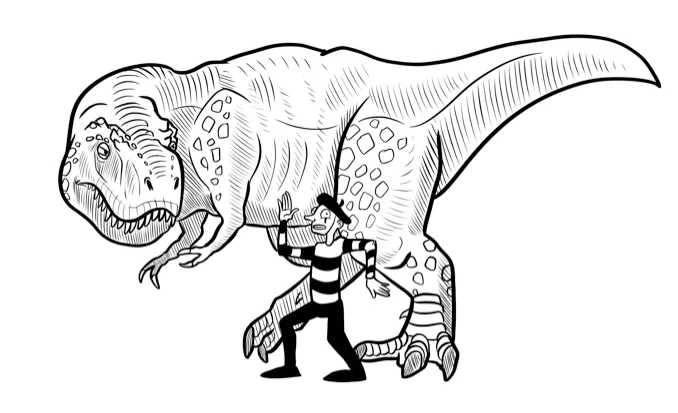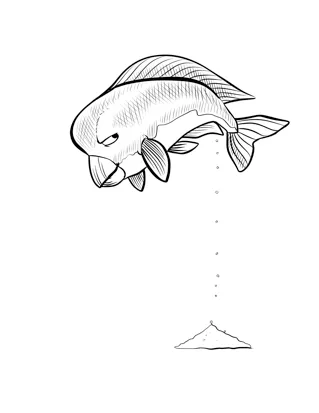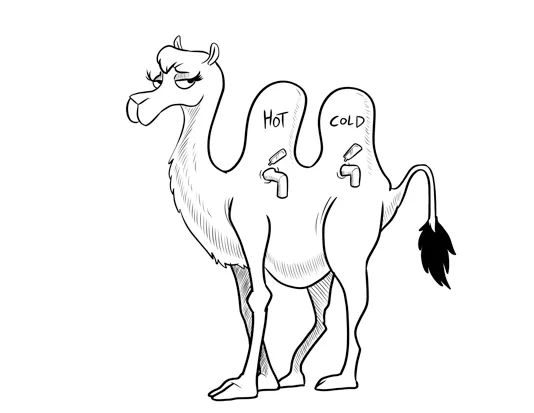Do you still think that the daddy long-legs are the most venomous creatures on the planet, but lack the fangs to poke you with, or that you can see penguin poop from space? Well, one of these is true (we might tell you which one later), and both are answered in the fascinating (and filthy) book,True or Poo, by Dani Rabaiotti and Nick Caruso. The "follow-through" to the their previous book, Does it Fart?, is packed with fun facts and falsehoods about the animal kingdom, and we've got a few of these for you to digest and share with friends and family alike.
Oh, and of course that daddy-long legs "fact" is a big old pile of...
A T. rex can't see you if you stand still
True or poo? POO

In probably the most famous dinosaur-related film of all time, the protagonists, upon being attacked by a Tyrannosaurus rex, are instructed not to move, because if they hold still the dinosaur will not be able to spot them.
In reality, however, it turns out that T. rex probably had pretty good vision. It may even have been better than modern-day raptors – that is, eagles and hawks – which are species famed for having incredibly good vision.
Not only that, but T. rex was also equipped with a great sense of smell. Remaining immobile doesn’t do much to mask your scent, so even if the T. rex’s vision was poor, standing still probably wouldn’t do you a whole lot of good.
In fact, contrary to what we often see in films, standing still and staying quiet is a pretty bad bet when faced with any large predator – top predators have evolved to have great eyesight, smell and hearing in order to better locate prey, and so will be able to locate you with ease.
Life finds a way, after all.
White sand is made of fish poo
True or poo? TRUE

Whilst the majority of sand is mostly poo-free – you know, bar the poo of the crabs, worms and other organisms that live in it – the
famous white beaches of the Maldives are basically just one giant beautiful accumulation of fish poo. Or at least, a component part of fish poo. Not just any old fish, though; this sand is formed by one fish species in particular, the bumphead parrotfish, Bolbometopon muricatum.
This large green fish feeds almost entirely on coral. Coral contains a type of algae, the foodstuff of most parrotfish species. Bumphead parrotfish bite off bits of coral with their hard beaks, which continuously grow throughout their lifetimes, before chewing it into dust with specialized pharyngeal teeth, digesting the algae and leaving behind the coral’s powdered, rocky remains. This ground-up coral is then pooed out as a fine sand, before being washed ashore to form the stunning beaches for which the Maldives are famous.
Each parrotfish can produce 90 kg of sand each year, and as a result 85 per cent of sand in the region has passed through a parrotfish at some point. So if you are ever lucky enough to visit the Maldives, you can relax on the beach knowing it all would not have been possible without one special parrotfishes’ sandy stools.
Camels store water in their humps
True or poo? POO

There are two species of camel – which is a type of even-toed ungulate in the genus Camelus – that are alive today. The dromedary camel (Camelus dromedarius) is native to the Middle East and the Horn of Africa, as well as being an invasive species in Australia, and has one hump. The Bactrian camel (Camelus bactrianus) is from Central Asia, and has two humps.
A common myth about camels’ humps is that they use them to store water. (Although it is true that camels can go an incredibly long time without drinking water – over 10 days! – when by comparison a human can live just 3–5 days without water.) So, if it’s not water, what is in that hump?
The answer is a whole lot of fat. Camels store fat for energy, as there isn’t a huge amount to eat in the desert, but instead of storing it all over their body – which
would make them rather warm – it gets stored on their back. Camels can have humps that weigh as much as 36kg.
So how does a camel go so long without water? Well, they can drink a massive amount very quickly, gulping down up to 200 litres in just three minutes, which can keep them going for a while. On top of this they have a whole lot of ways of preventing water loss, including their insulating coat, special nostrils to avoid expelling water when they breathe, and incredibly efficient kidneys that reabsorb most of the water from their urine, making the remainder thick and syrupy.
Nice.
True or Poo? by Nick Caruso and Dani Rabaiotti is available now (£9.99, Quercus)
Follow Science Focus onTwitter,Facebook, Instagramand Flipboard
